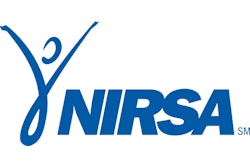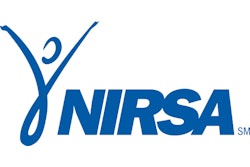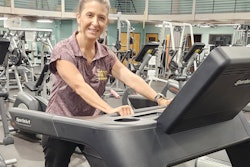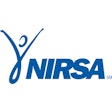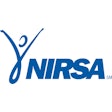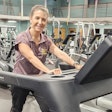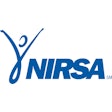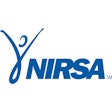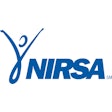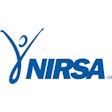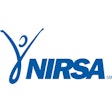
Few components of a municipal recreation center or private health club have the potential to create a stir in the design phase quite like laundry operations.
The main purpose of having in-house washing and drying services is to provide clean and fresh towels for users after swimming or showering. Yet some facility operators want nothing to do with towels and opt to enact a BYOT — bring your own towel — policy for patrons. That policy is usually driven by first-hand experience or second-hand knowledge of facility-issued towels frequently disappearing from the premises, never to return.
So while those facilities will offer wet wipes for exercisers to give equipment a quick cleaning before and after use, users are on their own when it comes to keeping themselves clean and dry. There still might be a residential-grade washer/dryer combo stack stuck in a space not much larger than a closet, but that’s typically installed as a convenience for staff to launder other facility textiles when needed.
Unlike municipal recreation centers, private health clubs and fitness centers are more likely to provide towels for their patrons, especially if there is a pool onsite. In that case, one of the most important decisions is whether to charge users for towel access. By making them pay for a towel, you also are subtly encouraging patrons to embrace the BYOT concept.
Another question when providing towels is whether to outsource laundry service to a third party or handle laundering the towels in-house. For many facility operators, the answer is simple: Let someone else take care of it. In that scenario, a laundry service vehicle usually picks up piles of soiled towels on a consistent and predetermined basis and replaces them with stacks of fresh ones. It’s a hands-off approach that eliminates concerns about towel theft but also can prove quite costly over time.
Other facilities, both private and public, that forgo the BYOT method choose to launder towels on their own. Regardless of whether you’re designing a new facility, renovating an existing one or simply changing internal practices, it is critical to install commercial-grade equipment in a space large enough to accommodate the machines and staff members tending to them. That’s not an inexpensive investment, either, as commercial laundry machines can cost thousands (and even tens of thousands) of dollars.
As a result, municipal recreation centers too often design for and install residential-style laundry equipment housed in tight spaces. That’s a decision some operators come to regret, especially after realizing that those machines simply can’t keep up with demand, frequently break down and need to be replaced every year or two. Their constant usage also requires continual vigilance by at least one staff member.
What it really boils down to is this: What does your clientele expect? At a higher-end, cost-recovery facility, where users are paying higher fees than at a traditional recreation center, expectations will be higher.
As a facility operator, your own expectations need to be both reasonable and feasible.
Go big — or not at all
The most obvious advantages commercial laundry equipment offer are increased volume and speed, which gives a facility the capability to wash and dry more towels faster. Units also are built to run continuously (if necessary), carry a stronger warranty and operate with greater energy efficiency.
Recognizing and understanding these benefits during a facility’s design or renovation phase is vital, because adding commercial-grade laundry equipment in a space not built to accommodate it can be challenging. Unlike residential machines designed to fit in basements and nooks, these machines carry significant space, electrical and plumbing requirements. Even if your plans don’t involve using commercial equipment right away, it’s easier to plan for its eventual inclusion than to overlook it entirely.
If a facility opts against installing a commercial washer and dryer, it’s likely still more cost-effective in the long run to forgo residential equipment (including the high internal labor costs) in favor of outsourcing towel service to a third party.
Another consideration, especially if theft is a main concern, can be an on-site towel-vending machine. Michigan-based Towel Tracker LLC manufactures standalone units designed for high-volume towel distribution and collection. Integrated RFID technology eliminates theft, according to the company, by assigning towels to users and tracking their return. The company also claims its towel vending machine reduces annual towel costs by 20% to 50% at fitness clubs.
Tying towels to membership means that vending towels is generally more practical for use in private facilities than in public ones. That said, I know of one municipal recreation center that experimented with a towel vending machine and noted the importance of placing it in a central and convenient location that encourages users to return their towels. Otherwise, some users were not as motivated to return them and either walked away with the towels or deposited them in random locations.
The best placement for that type of vending machine is in a common locker area or, in facilities with a natatorium, immediately off the pool deck.
Early considerations
Regardless of how you launder and distribute towels — and barring the installation of towel-tracking machines — spend some time thinking about the type and location of your facility’s towel distribution systems. Cabinet space, shelves or carts in male and female locker rooms will help increase efficiency in allowing users access to towels. Towels can also be distributed on a by-request basis at check-in desks, which allows for easy account-charging.
Just as important as distributing towels is developing a viable strategy for collecting used ones for laundering. Locker room bins serve that purpose well, but some facilities also place rolling bins in centrally located, gender-neutral spaces. Such areas can include corridors just outside pool areas or near facility exits, with the bins positioned on the other side of a wall that has slotted openings in which patrons can conveniently drop their towels, similar to how they might return library books. This approach also prevents staff members from needing to enter locker rooms to collect used towels. In either case, the bins or carts can then be rolled to the laundering facilities to be cleaned.
When planning a new facility or discussing renovation possibilities, keep in mind that laundry areas are best located near locker rooms. And, as referenced earlier, they need to be spacious enough to accommodate not only large pieces of equipment (most facilities likely will need just one commercial-grade washer and dryer, based on their user load and hours of operation) but also laundry carts or bins, folding tables or counters, storage space for laundry supplies and at least one employee working in the space.
A laundry room also should be built along an exterior wall for easy dryer venting (just like many residential laundry spaces). If at all possible, it should be located in a lightly trafficked part of the facility, too, given the noise and humid air in that space.
Washers and dryers, along with related plumbing and electrical infrastructure and space needs, are significant line items in planning budgets, and from a design standpoint, they matter more than many facility operators tend to initially realize. Early in my career as an architect, laundry-related discussions were not as prevalent as they are today, and I remember being stung when clients decided to add more laundry space or change their laundering preferences later in the planning process, because that determination considerably complicated matters.
It was a valuable lesson, and one I never forgot, which is why I bring up the laundry topic in the beginning stages of a project. Often, it’s an operational component that facility operators haven’t thought about much until they’re asked the question.
In many ways, parallels can be drawn between planning a facility’s laundry service and planning its food service. And again, it comes down to this: What will facility users expect? Will concessions or vending machines suffice? Or would a full-service bar-and-grill operation be more effective in the long run? Like kitchens, laundry rooms are costly additions to design, budget for and add late in the process.
If a recreation center or fitness facility opts for in-house laundry services, management must view them as a valuable extension of their internal operations and not cut corners in the planning and design phases. Type of equipment and placement within the facility, as well as towel distribution and collection strategies, are all vital to successful laundry operations.




















